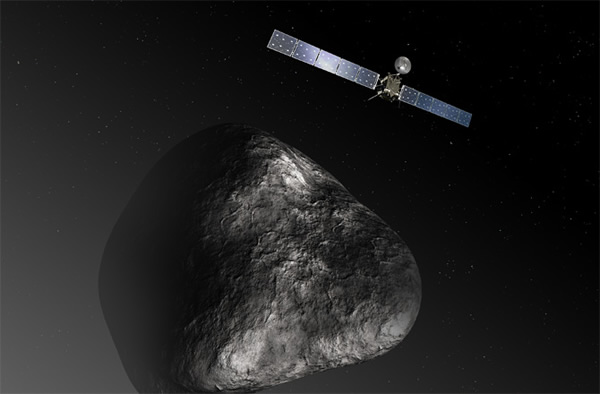Hibernating Rosetta Comet Probe to Get Wake-Up Call
Artist's impression of the Rosetta orbiter at comet 67P/Churyumov–Gerasimenko. The image is not to scale.
Europe’s Rosetta comet probe is due to end 31 months of deep space slumber with a wake-up call at 5 a.m. EST on Monday.
First on Rosetta’s to-do list is warming up its star trackers, which are needed for navigation and positioning. Flight controllers expect that task to take about six hours.
Next, Rosetta is programmed to fire its steering rockets to slow its once-per-minute rate of rotation and tweak its orientation so that its solar arrays are facing directly at the sun.
After activating its star-trackers and determining its position, Rosetta will then turn on its transmitter, point its main radio antenna toward Earth and send a signal. Because it is so far away — more than 500 million miles — the signal, moving at the speed of light, will take 45 minutes to reach Earth.
The first opportunity for ground control teams to detect the transmission will be between 12:30 and 1:30 p.m. EST.
Rosetta, which was launched in March 2004, is heading toward a 2.5-mile wide comet called 67P/Churyumov-Gerasimenko.
During its journey, Rosetta made three flybys of Earth and one of Mars to pick up speed. It also studied two passing asteroids, Steins and Lutetia, before being put into hibernation in mid-2011.
Rosetta is due to reach the comet in August. Unlike previous probes, Rosetta will not fly past its target, but instead will put itself into orbit around the comet.
Rosetta also carries a secondary spacecraft called Philae, which is due to land on the comet’s body in November.(Jan 19, 2014 07:34 PM ET // by Irene Klotz)












